One Year Later, BU Alum Reflects on Covering the Tree of Life Massacre and Winning a Pulitzer Prize

Samina Mohamedali prepares to place flowers on a memorial in front of the Tree of Life Congregation, as other members of Pittsburgh’s Dawoodi Bohra Muslim community look at the memorial the day after the shooting. Alexandra Wimley/Pittsburgh Post-Gazette. All photos copyright Pittsburgh Post-Gazette, 2019, all rights reserved. Reprinted with permission.
One Year Later, BU Alum Reflects on Covering the Tree of Life Massacre and Winning a Pulitzer Prize
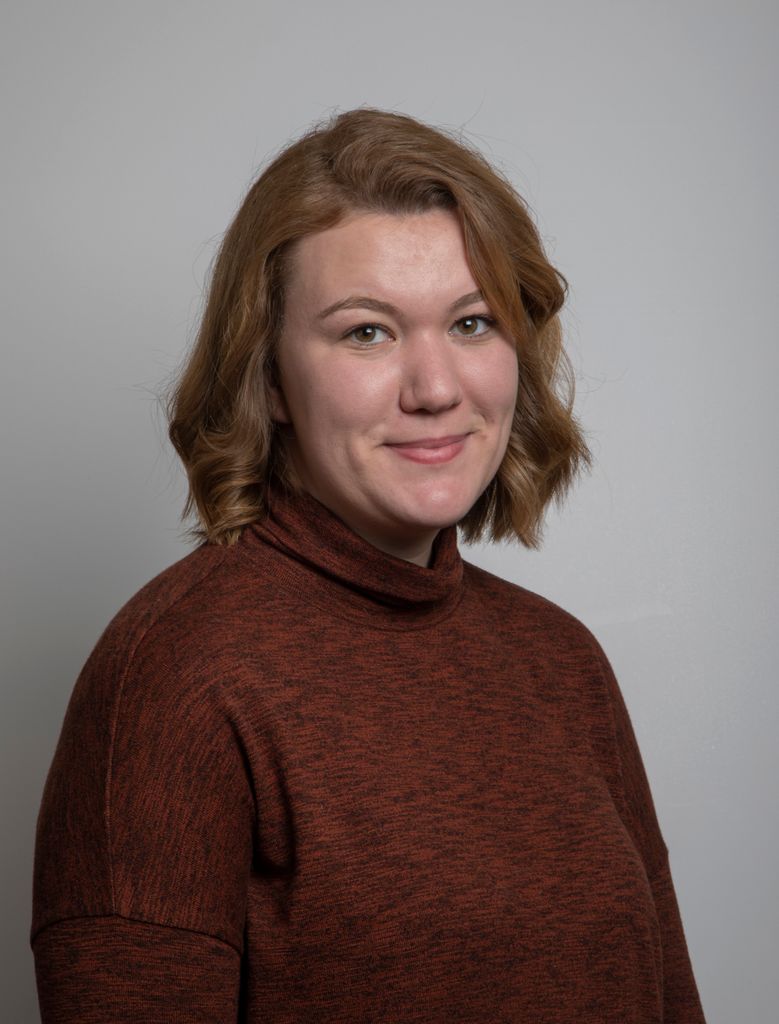
A year ago this Sunday, October 27, 2018, a peaceful Shabbat morning service at Pittsburgh’s Tree of Life synagogue was tragically interrupted by a lone gunman, 46-year-old suspect Gregory Bowers, who killed 11 congregants and injured 7 others. The massacre was the deadliest attack ever on the Jewish community in the United States. In the hours and days that followed, the community gathered to mourn and pray.
There on the ground was photojournalist Alexandra Wimley (COM’17), who arrived at the scene within minutes of the mass shooting. She had been working for the Pittsburgh Post-Gazette for only 25 days, but her work would be recognized with a Pulitzer Prize, awarded to the paper’s staff for breaking news reporting. Bostonia recently spoke with Wimley about her experience that October day, and in the weeks and months following the tragedy.
Q&A
Alexandra Wimley
Bostonia: Where were you when you got the call to cover the shooting at the Tree of Life synagogue?
Wimley: I live about a five-minute drive from the synagogue. My editor knew that, so I was one of the first calls that she made. This was probably between 10 and 10:30 am. She called me and said, “We’re hearing about an active shooter in the synagogue, and we need you to go.” I was there in seven or eight minutes.
What did you see when you got there?
I saw some TV cameramen, so I went over to where they were. Immediately after I got there, I heard a round of gunfire. The shooter was still exchanging gunfire with the police. I started taking photos from a relatively safe position and out of sight of the police. They knew we were there and were adamantly making us back up, so I was trying to stay out of their direction so we wouldn’t have to leave the area.

Had any of your prior experiences prepared you for this sort of assignment?
I’d covered the aftermath of gun violence, but I’d never covered an active scene like this. I knew what the boundaries were with police—they can know you’re there as long as you’re not in the way. But you’re never really prepared to cover a mass shooting.
How did you and your colleagues coordinate your coverage?
We had a group text with everyone who was there. We would say, “I’m here, so you should go somewhere else.” The synagogue is at an intersection and there were four corners where people could have been, so we coordinated to cover as much of the area as possible. It was a while before we knew the details—how many people were dead and when the shooter was in custody. Eventually I saw the body language of the police change. When I first got there, everyone had their guns drawn, then at some point I noticed that was no longer the case. That’s when I assumed that the shooter was in custody and left to file my photos.
The Post-Gazette covered this story for weeks. What was it like to be covering a story for such an extended period?
Every single day my assignment was related to this. And we’re still covering it, especially as it comes up on the one-year mark. The week after was hard because we were covering the funerals. But continuing to cover it eventually helped me process my own experience. A lot of things that happened afterward—people coming together to raise money and to offer support, the vigils—showed me the beauty and richness of this community. It’s nice to be the local journalist in this situation, because you’re not just covering the tragedy and then leaving, you’re also covering the good stuff that comes out of it. I found that to be therapeutic.
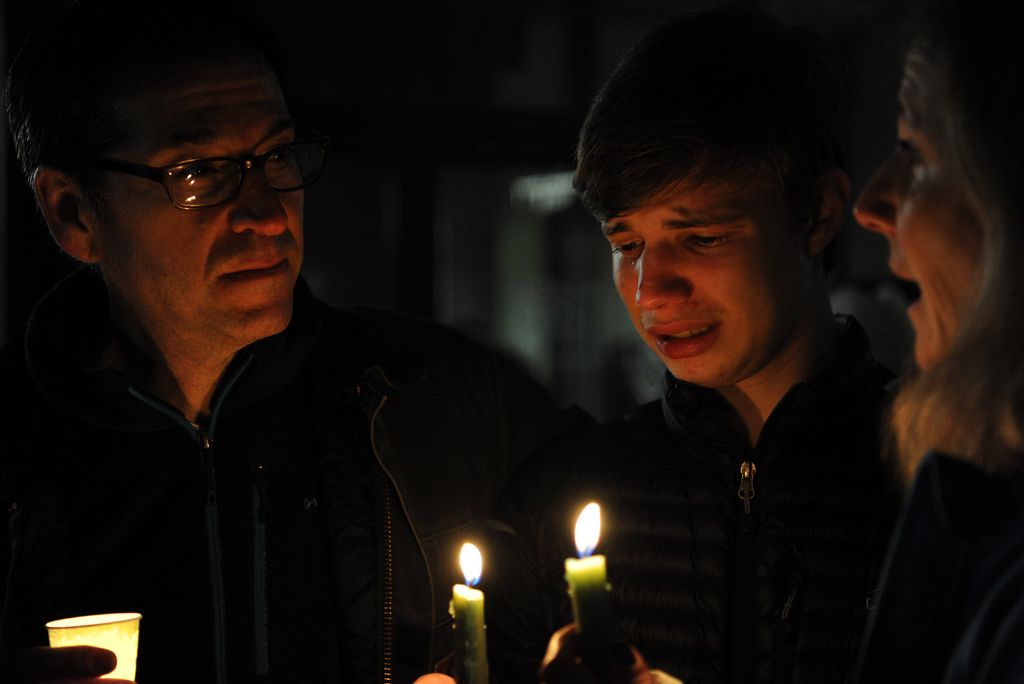
What kind of feedback have you received from the community?
People were very kind and supportive. I think part of that was the fact that we were local and people saw that we were being extremely respectful in our coverage. People I would talk to to get their names would ask me how I was doing, which I’ve never experienced before. I give a lot of that credit to the reporters and editors for making really great decisions about the way we covered things. Our presence at the scene was different than—well, I don’t want to name names, but the big folks that came in from DC and New York. They just have a different job to do and had to do it more quickly.
How do you respect someone’s need to mourn while also doing your job?
A lot of it is reading the situation and waiting for as long as you can to approach someone or being as far away as possible while still taking photos. In other situations, like a political event, you can push those boundaries to get photos. In this case it’s not worth it. When you have to approach someone who has been crying, you have to go about it with respect, saying you’re sorry, and asking if they’re comfortable giving their name. If they say no, you don’t publish that photo. That’s okay.
What was your reaction to finding out that your team was receiving a Pulitzer Prize?
It was surreal. It was exciting, of course, because it’s a Pulitzer—and it means that we did our job well.

This interview has been edited and condensed for clarity.
View more of Wimley’s photographs in the gallery below. Click the photos for more details.
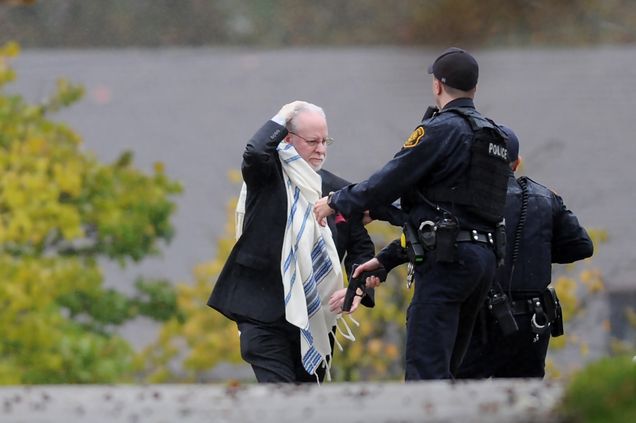
Rabbi Jeffrey Myers is escorted out of the Tree of Life synagogue by police. Alexandra Wimley/Pittsburgh Post-Gazette
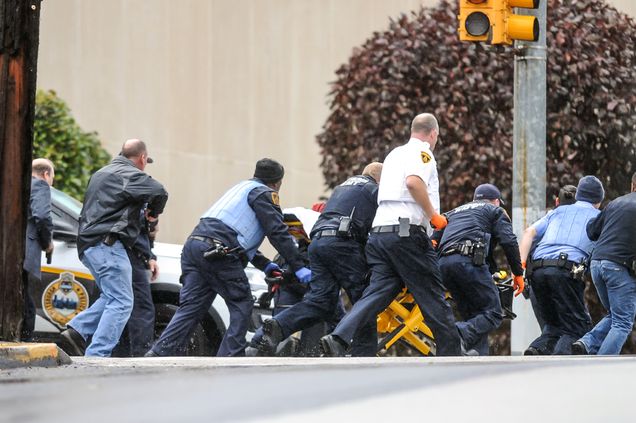
Law enforcement runs with a person on a stretcher at the scene where multiple people were shot. Alexandra Wimley/Pittsburgh Post-Gazette

Men comfort each other during the first Shabbat prayer service since the shooting, held outside the Tree of Life synagogue. Alexandra Wimley/Pittsburgh Post-Gazette
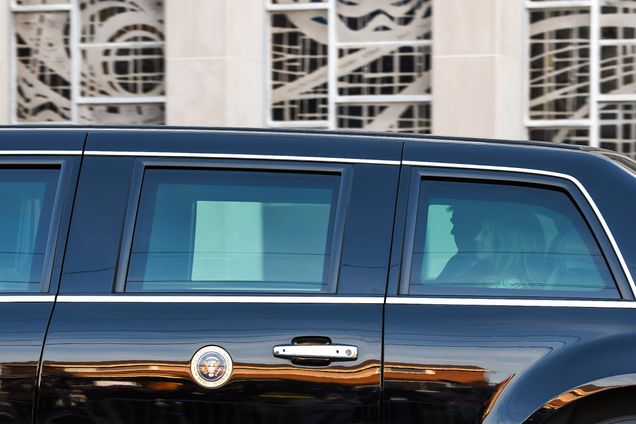
A limousine carrying President Donald Trump and First Lady Melania Trump passes the Tree of Life synagogue after the couple visited with Rabbi Jeffrey Myers to pay their respects on October 30, 2018. Alexandra Wimley/Pittsburgh Post-Gazette
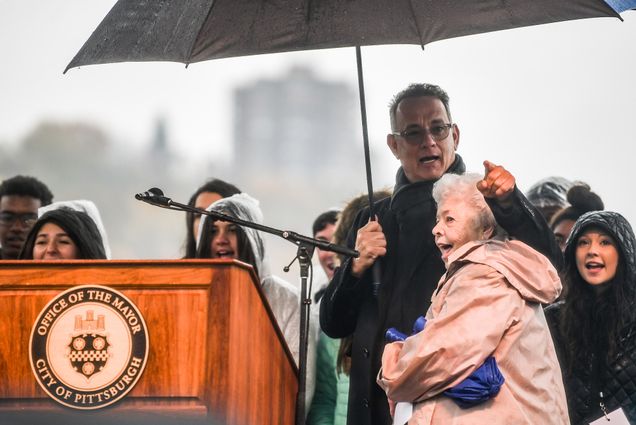
Actor Tom Hanks embraces long-time Pittsburgh resident Joanne Rogers, wife of the late Fred Rogers, as they sing the theme song of Mister Rogers’ Neighborhood during the Rally for Peace and Tree of Life Victims, on November 9, 2018. Alexandra Wimley/Pittsburgh Post-Gazette
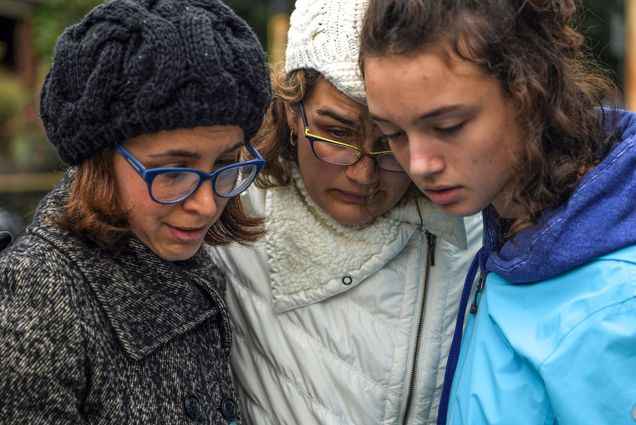
Tammy Hepps (from left), Kate Rothstein, and her daughter, Simone Rothstein, all of Squirrel Hill, read from a religious text and embrace at the intersection of Shady Avenue and Northumberland Street during a vigil following the massacre. Alexandra Wimley/Pittsburgh Post-Gazette
Comments & Discussion
Boston University moderates comments to facilitate an informed, substantive, civil conversation. Abusive, profane, self-promotional, misleading, incoherent or off-topic comments will be rejected. Moderators are staffed during regular business hours (EST) and can only accept comments written in English. Statistics or facts must include a citation or a link to the citation.